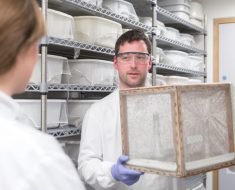Patients with terminal kidney failure require either frequent dialysis or a new, donated kidney to survive. Donor kidneys can be found via cadavers or by finding a willing and compatible living donor—usually a family member. Then, medical and psychological work is done to determine whether that donor is indeed compatible. If tests determine that, for example, the donor’s kidney is not likely to be accepted by the patient’s body, then the process halts and restarts.
One recent innovation has been the emergence of a process called kidney exchange, where patients with terminal kidney failure, who cannot find a match among their own possible donors, can “swap donors” with other kidney patients in a similar situation. Still, while certain efficiencies are achieved through the use of data solutions that accelerate the search and matching process, there are still some challenges.
A new study, however, has sought to address these challenges and introduced the concept of “failure-aware” algorithmic matching to improve success rates. The study, “Failure-Aware Kidney Exchange,” was conducted by John Dickerson of the University of Maryland, and Ariel Procaccia and Tuomas Sandholm of Carnegie Mellon University, and published in the INFORMS journal Management Science.
What Could Go Wrong?
There are roughly 100,000 people currently on the waiting list for a kidney transplant from a deceased donor. While the kidney exchange process increases the potential donors available for patients in need, many variables can cause problems even in situations where a match is identified.
The United Network for Organ Sharing (UNOS) reports that, despite the increased matches made with kidney exchange approach, about 90 percent of planned matches do not occur due to last-minute failures including the death or illness of one of the patients, a donor donating elsewhere or reneging, one patient receiving a kidney elsewhere including the deceased donor waiting list, and other factors. These problems are prevalent in kidney exchanges around the world.
“If one planned match in a cyclic swap fails for any reason, including even a simple failure of a pre-transplant medical test, the entire set of matches in that cycle fails,” said Dickerson. “However, this can be mitigated in part via sophisticated techniques from the optimization and artificial intelligence literature.”
“In modern exchanges, transplant chains—where kidney donors with no paired patient trigger long series of transplants—drive match efficacy. However, when one match in a kidney exchange chain fails, the planned transplants for every subsequent participant in that chain fail as well, causing huge losses in potential match efficiency,” said Procaccia.
The Key is a “Failure-Aware” Method
According to this new research, when conducting the data analysis, by identifying and incorporating additional factors that contribute to what is known as “match failure,” the number of successful transplants can roughly double, depending somewhat on the exact setting in which the exchange operates.
Using real UNOS data, the researchers created a scalable algorithm that takes into account the traditional data used in kidney matches, such as blood-typing, as well as the additional factors that typically lead to pre-surgical failure of compatibility. Depending on the exact setting in which the kidney exchange is operating, the new failure-aware method results in roughly twice as many successful transplants, assuming realistic failure rates drawn from data.
The researchers’ failure-aware approach also addresses an additional issue associated with kidney exchange that has both ethical and economic ramification, and that is highly-sensitized patients, such as those with a history of additional chronic illness, whose match opportunities are rare and intrinsically have a higher probability of failure. For those patients in particular, the researchers found that the failure-aware approach lessened the match failure rate by up to 45 percent, depending on policymakers’ input.
Source: Read Full Article





